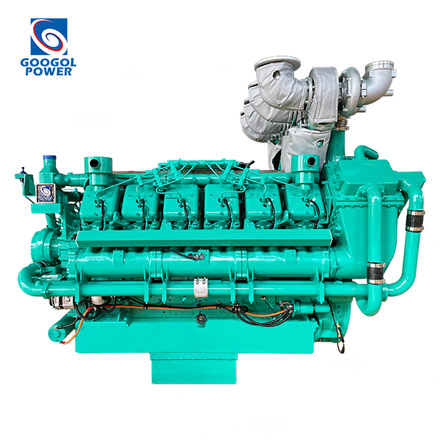- HOME
- ABOUT GOOGOL
- PRODUCTS
DIESEL ENGINE
GENERATOR SETS
- DOWNLOAD
- CASES
- NEWS
- CONTACT US
DIFFERENCES BETWEEN DIESEL AND GASOLINE ENGINES
Diesel engines and gasoline engines are two types of engines commonly encountered in our daily lives. Despite both being able to convert chemical energy into mechanical energy, they significantly differ in operational methods, working principles, and fuel types.
OPERATIONAL METHODS
Gasoline engines use spark ignition. They ignite a spark within the fuel and air mixture to generate energy. In contrast, diesel engines operate by compression ignition. They compress air to extremely high pressures, elevating its temperature. Diesel fuel is then injected into this high-temperature air, where it self-ignites due to the heat, producing energy.

WORKING PRINCIPLES
Gasoline engines operate on the four-stroke reciprocating principle:intake, compression, combustion, and exhaust. During the intake stroke, the engine draws in the fuel-air mixture. In the compression stroke, this mixture is compressed. The spark ignites it during the combustion stroke, creating energy. Finally,
the exhaust stroke expels waste gases.
Diesel engines operate on the compression ignition principle:air is compressed to high temperatures, and diesel is injected into this hot, compressed air, self-igniting due to the temperature. Diesel engines lack spark plugs and rely on injectors to introduce diesel into the cylinder, eliminating the need for a spark ignition system.
FUEL TYPES
Gasoline engines use gasoline, a volatile fuel that can ignite at lower temperatures. In contrast, dieselengines use diesel fuel, which is denser and requires higher temperatures for ignition compared to gasoline.